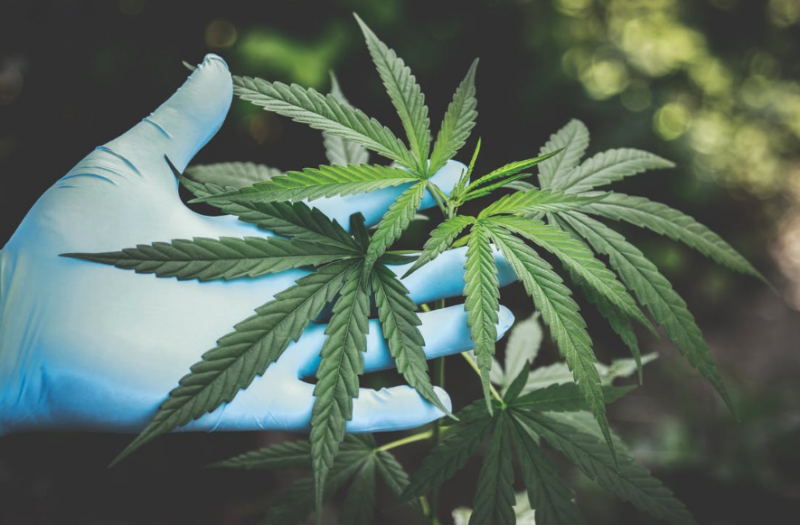Interested in using CBD for chronic pain? Here’s what you need to know about CBD and pain management
We’re in the midst of a cannabidiol phenomenon and it is showing no signs of slowing down. Cannabidiol, also known as CBD, is a chemical found in cannabis-containing plants like marijuana and hemp. Cannabis plants contain two chemicals: CBD and THC. THC stands for delta-9-tetrahydrocannabinol, which is the chemical known for being psychoactive and known to produce the “high” or the euphoric feeling often associated with using cannabis.
But what exactly is CBD?
CBD, according to medical news website Healthline, is a type of cannabinoid found in cannabis plants known to be non-psychoactive. This means that while CBD and THC come from the same plant, the two have very different effects. Because of its non-psychoactive attribute, CBD has become a popular option for those combating PTSD, sleep disorders, mental disorders, epilepsy, as well as chronic pain. CBD inherits many medical properties from cannabis such as its anti-inflammatory and anti-anxiolytic attributes without the induced euphoria and “high” feeling often associated with other strains of cannabis plants.
Over the last couple of years, the fight for CBD tolerance and acceptance has led to the emergence of a plethora of CBD products flooding the market. As more and more people start to realize the benefits of using CBD as an alternative form of treatment, CBD enthusiasts are expecting more and more scrutiny over CBD’s supposed plethora of benefits. One of those benefits? Pain management.
The History of CBD
CBD has been used in dealing with different types of illnesses for centuries. According to CBD Origin, the earliest documented use of cannabis-derived medicine dates back to the rule of Sheng Nung. Sheng Nung was a Chinese emperor known to have tried and tested different types of herbs to pioneer traditional Chinese medicine. In addition, Sheng Nung was believed to use cannabis-infused tea to help with a variety of pain-related illnesses.
It was not until 1839 when William B. O’Shaughnessy, an Irish researcher, published a study detailing the various health benefits of using cannabis. O’Shaughnessy is also believed to be the first known scientist to conduct the first known trials and experiments involving cannabis. Through those trials, O’Shaughnessy presented a variety of case studies and concluded that cannabis contained a natural remedy for convulsions.
Throughout history, cannabis has served as a valuable therapeutic resource despite its lack of scientific backing and data. In modern times, however, the increasing demand for CBD has led to a likewise increase in demand for scientific studies to prove or disprove its alleged benefits. Recent studies are now even claiming that CBD acts as a supplementary fix for a wide range of physical and mental problems that could otherwise take months or even years of therapy to cure.
What Does the Science Say?
Studies about CBD, THC, and cannabis, in general, are scarce to say the least. CBD, up until 2018, has also been classified as a Schedule I substance (a definition by the federal government concerning drugs with no currently accepted medical use and a high potential for abuse) giving it an almost taboo distinction as being classified as a Schedule I substance places it in the same ranks as marijuana.
The resurgence of medical cannabis as a form of alternative treatment has spewed a fierce debate about the benefits of cannabis in the medical field. Medical cannabis refers to physician-recommended use of cannabis and its components, CBD and THC, to treat disease or alleviate symptoms.
The Center for Disease Control and Prevention estimates that 20.4% of adults in the U.S. experience chronic pain and 8.0% of those adults in the U.S. experience high-impact chronic pain. As a direct result, healthcare costs are skyrocketing for people experiencing chronic pain especially after chronic pain has been found to be linked to a variety of physical and mental disorders.
This means that more people affected by chronic pain are trying to avoid the rising costs by seeking more cost-effective treatments that would not break the bank. One affordable and seemingly effective supplement to pain management is CBD. A recent study by scientists Jamie Corroon and Joy Phillips about the medicinal benefits of CBD claims that out of the 62% of people who use CBD for medical purposes, most use it to manage chronic pain in illnesses such as joint pain and arthritis. Despite CBD becoming legal in the U.S. only recently, the demand for CBD has been steadily increasing as it provides an affordable and relatively safe treatment for chronic pain.
A breakthrough in 2018 has paved the way for CBD to break out into the mainstream. In June of 2018, the United States Food and Drug Administration has approved the first CBD-based drug named Epidiolex. According to the US FDA, “Epidiolex’s effectiveness was studied in three randomized, double-blind, placebo-controlled clinical trials involving 516 patients with either Lennox-Gastaut syndrome or Dravet syndrome.”
Both being types of epilepsy, Lennox-Gastaut and Dravet syndromes responded very well when being treated by Epidiolex. The FDA, through commissioner Scott Gottlieb, has issued a statement about the approval of Epidiolex.
“This approval serves as a reminder that advancing sound development programs that properly evaluate active ingredients contained in marijuana can lead to important medical therapies. And, the FDA is committed to this kind of careful scientific research and drug development,” said FDA Commissioner Scott Gottlieb, M.D.
It remains to be seen whether or not CBD will become a staple in every U.S. household in the near future. More research is needed for CBD to be widely accepted even if early studies concerning CBD look promising. Research is also needed to verify the drug’s alleged benefits as well as disprove false claims about the drug’s effects.
GetWell Tip: Talk to your doctor first! It pays to have a specialist examine your needs first before you take any type of medication/alternative medication. Pay a visit to your doctor and see if the pain you experience may be treated or aided by CBD. Arm yourself with enough know-how to avoid any type of complications!
Key Takeaways:
- CBD has played a role in history as one of the earliest forms of alternative medicine
- CBD is different from THC as it doesn’t have the induced “high” effect
- Recent studies concerning CBD have found that CBD can be used to treat chronic pain and aid people experiencing chronic pain in pain management
- Epidiolex is now the first CBD-based drug approved by the US Food and Drug Administration

